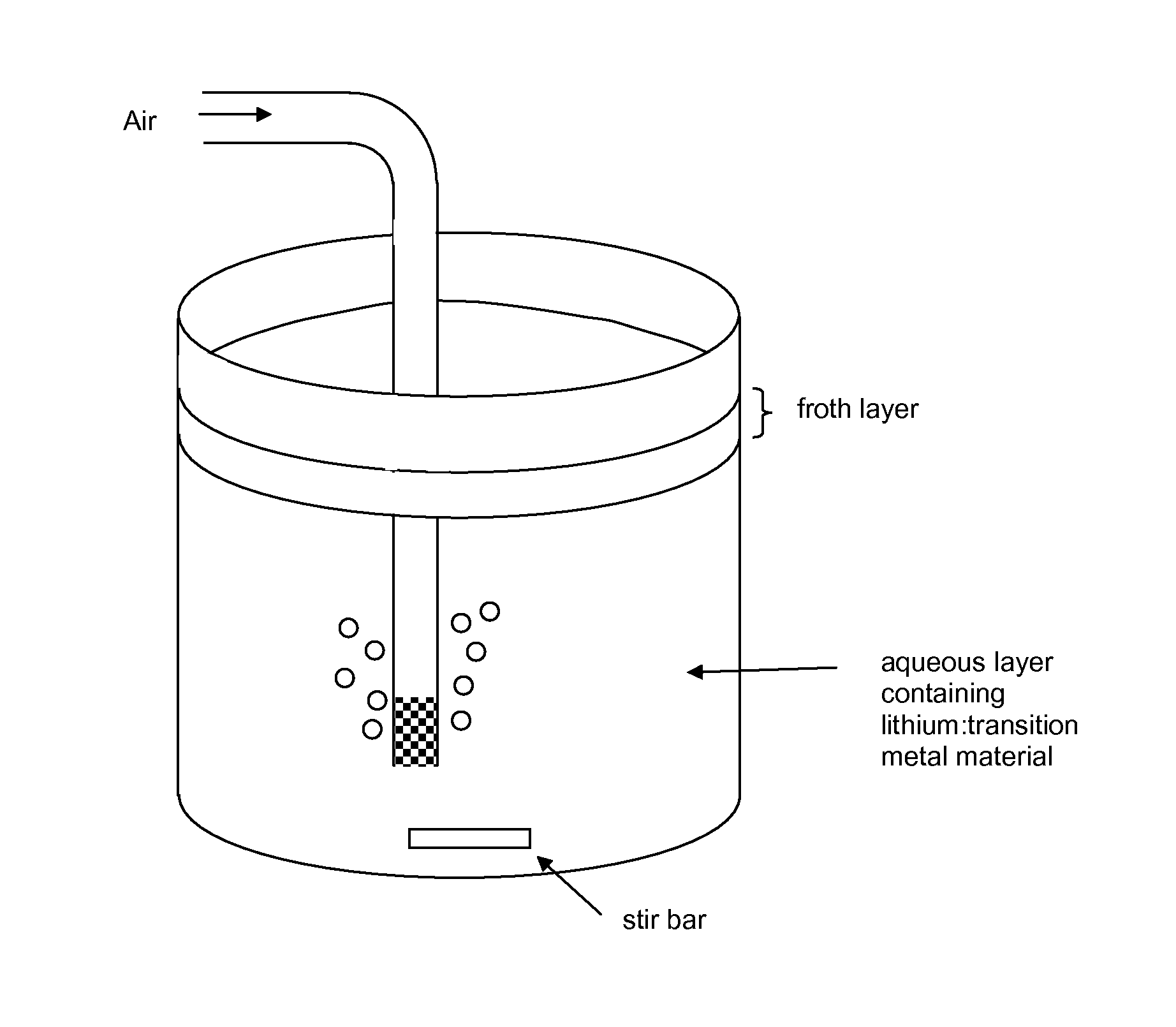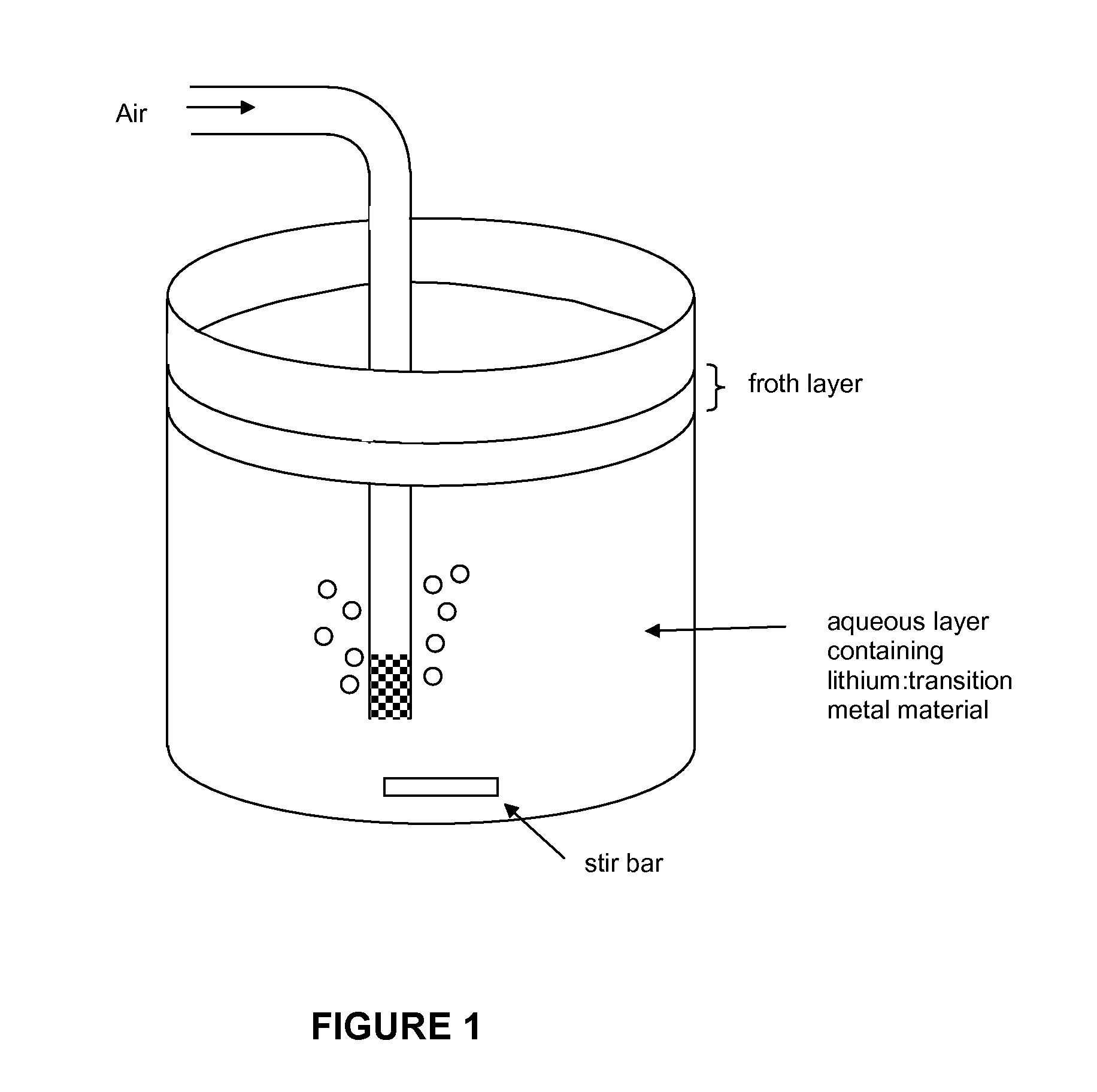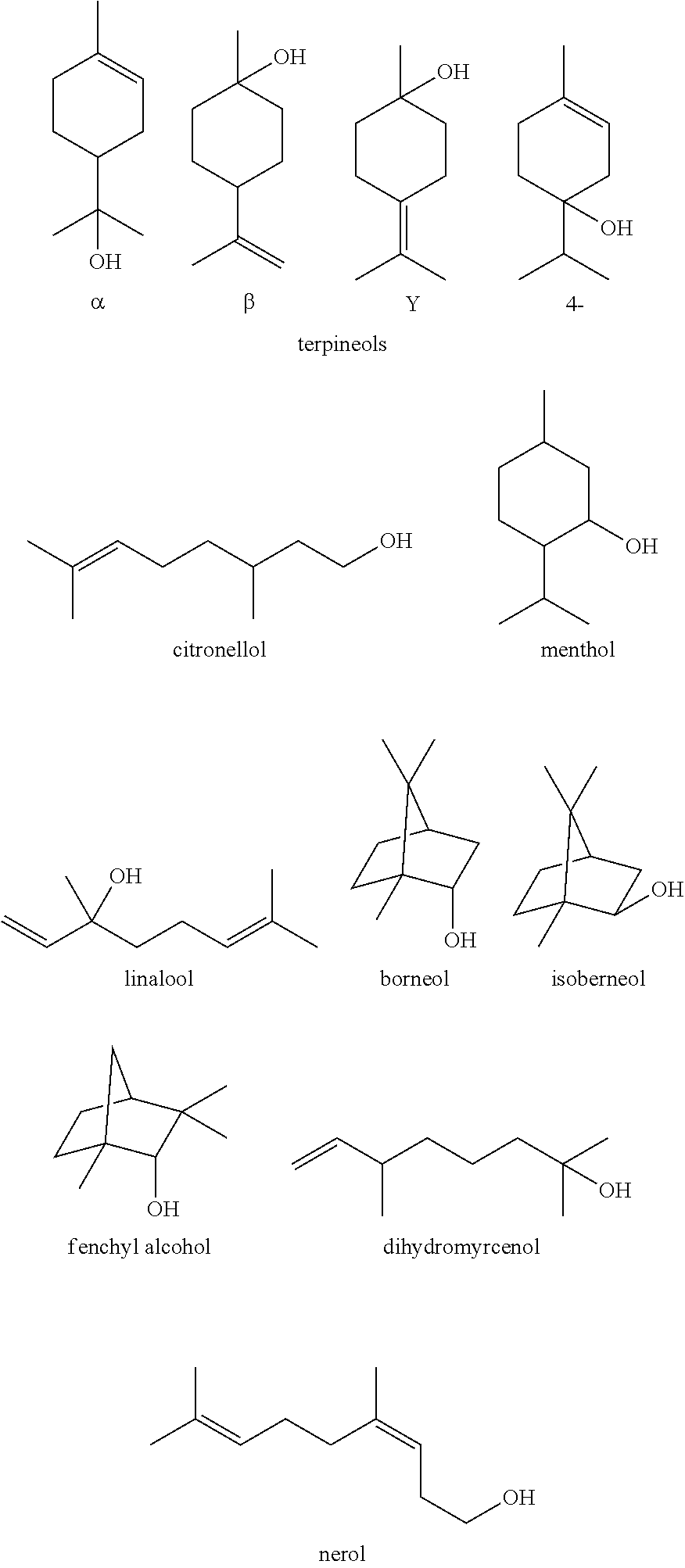Method for the recovery of lithium cobalt oxide from lithium ion batteries
- Summary
- Abstract
- Description
- Claims
- Application Information
AI Technical Summary
Benefits of technology
Problems solved by technology
Method used
Image
Examples
example 1
[0069]Used laptop batteries were manually disassembled by breaking open the exterior plastic casing with a hammer to reveal the individual cells. Each cell was cryogenically cooled in liquid nitrogen, immobilized in a vise clamp, and the end was sawed off with a hacksaw. The steel casing was removed and the cathode was separated from the rest of the battery components.
[0070]The cathode foils were cut into 0.5″×0.5″ squares and placed in a Speedmixer™ vial. N-methylpyrrolidone was added to cover the cathode foils, and the components were placed on the Speedmixer™ for 5 minutes to dissolve the polyvinylidene fluoride (PVdF) and remove the cathode materials from the aluminum foil. The resulting slurry was concentrated by centrifugation and collected by filtration.
[0071]The collected material from crushed lithium-ion batteries which was previously subject to removal of the binder were subjected to froth flotation using a novel frothing agent / collecting agent system to remove residual ca...
example 2
[0077]Experiments were performed with different combinations of frothing agents and collecting agents to compare best results. Prior to the testing of the method of the invention, the solids comprised LiCoO2, plastic binder and carbon. The results are tabulated in Table 1 below.
TABLE 1Recovery and purity results using different frothing and collecting agents.Collecting agentFrothing agentLiCoO2 recoveryLiCoO2 purity(kg / ton of solids)(kg / ton of solids)(avg % yield)(avg %)kerosene (58)MIBC (7)96%91%kerosene (29)terpineol (36)68%96%limonene (61)MIBC (7)96%91%limonene (30)terpineol (36)87%97%limonene (61)98%poor—terpineol (72)94%poorcrude mixture of limonene (32) and73%99%terpineol(35) produced in situ
example 3
[0078]Because the lithium cobalt oxide in a lithium-ion battery becomes delithiated over the lifetime of the battery, the Li:Co ratio is preferably restored to 1:1 for reuse in a new battery. The recovered lithium cobalt oxide and an appropriate amount of lithium carbonate were placed in an amalgamator vial and processed in an amalgamator for 3 hours. For cases in which the relithiated material was to be calcined, the ratio of Li:Co was adjusted to 1.05:1. The material was then calcined at 850° C. for 12 hours. The Li:Co ratio of the lithium cobalt oxide powder was analyzed by atomic absorption spectroscopy. Advantageously, real time monitoring of the Li:Co ratio ensures that the correct amount of Li2CO3 is used.
[0079]Relithiation Example A: A 1.0 g sample of lithium cobalt oxide whose Li:Co ratio was determined to be 0.962444:1 was combined with 14.2 mg Li2CO3. The mixture was ground in an amalgamator for 3 hours.
[0080]Relithiation Example B: A 1.0 g sample of lithium cobalt oxide ...
PUM
| Property | Measurement | Unit |
|---|---|---|
| temperature | aaaaa | aaaaa |
| temperature | aaaaa | aaaaa |
| thickness | aaaaa | aaaaa |
Abstract
Description
Claims
Application Information
 Login to View More
Login to View More - R&D
- Intellectual Property
- Life Sciences
- Materials
- Tech Scout
- Unparalleled Data Quality
- Higher Quality Content
- 60% Fewer Hallucinations
Browse by: Latest US Patents, China's latest patents, Technical Efficacy Thesaurus, Application Domain, Technology Topic, Popular Technical Reports.
© 2025 PatSnap. All rights reserved.Legal|Privacy policy|Modern Slavery Act Transparency Statement|Sitemap|About US| Contact US: help@patsnap.com



